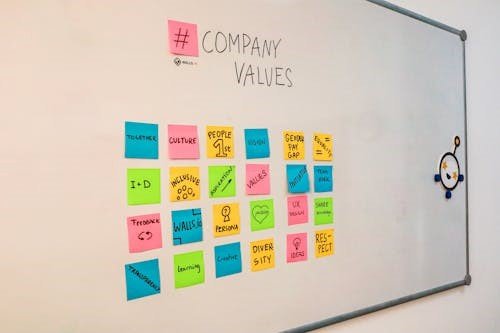Transcending the DEI Backlash
Orin C. Davis, Ph.D.
Understanding the Backlash Against DEI

What goes up, must come down. At least, that’s true when there’s no force holding it aloft, and that’s what happened with the DEI initiatives that grew out of a feeling that companies just had to do something to promote DEI and make everyone feel better about some of the racially changed events of the early 2020s. Considering how many comments there were before, during, and after about how performative these DEI endeavors were, no one should be surprised that all of the diversity VPs were canned and the initiatives defunded. Indeed, research shows that DEI initiatives can actually backfire, especially when they are performative or are too focused on hitting targets (often a euphemism for “quotas”) that are illegal in some countries and viewed as highly unethical by many of the rest. It is this overfocus on outcomes for specific demographics that is the primary foundation for the backlash, as this smacks of the very behaviors that got humanity in this mess in the first place.
The Role of Demographics in DEI
Demographics are too basic of a measure to identify root causes
As I have pointed out in the past, the primary use of demographic data in DEI is as a thermometer. It tells you when something is off, but it doesn’t tell you if something is off-kilter, wrong, or dangerously problematic, and it certainly doesn’t provide any indicator of what isn’t quite right or why it isn’t quite right. If, for instance, representation of a particular demographic within a company is rather far from that demographic’s percentage of the population, it is not time to panic; it is time to investigate.
There may be any number of valid reasons for this discrepancy, ranging from location constraints to small numbers of people having the relevant skills (which throws statistics for loop). And sometimes, even if bias is uncovered, there may be nothing that the company can do about it directly. For instance, women are heavily underrepresented in tech at almost every level, including in background education, as that makes it impossible for companies to have their tech departments be 50% women. What tech departments can do, however, is get a sense of whether the percentage of women within the population of qualified applicants comes close to the percentage of qualified female applicants in the pipeline, and they can look through that pipeline to ensure that there are no biases preventing perfectly qualified women from getting and accepting offers.
The why of DEI
The reason why a company should investigate when the numbers are off, however, is what actually keeps DEI initiatives in the air. Things like social justice, a need to respond to current events, and the like, do not feed the bottom line in the long term in any direct and sustainable way, and so they will peter out and fall. The way to keep such bias-avoidance initiatives in play is recognizing their inherent value to the company. If demographic bias is knocking people out of the hiring and promotion pipelines, then the company is missing out on top talent that is readily available, and that’s rather obviously going to hurt profits. So, while there is certainly grounds for arguing that the business case for DEI is less important than the fact that it’s the right thing to do, the hard reality is that companies have fiduciary responsibilities, and initiatives that don’t appear to be fulfilling those responsibilities are going to be cut sooner or later. Whether we like it or not, principles have a price, and if paying that price doesn’t provide a return on investment, the investment will be terminated.
As such, we need to start looking at every part of DEI not as appeasing the mob, or addressing a societal problem that does not fall directly within the scope of the company’s mission, but rather as being the best way to bring in and maximize the talent available to the company so that the company is successful. (See ANC Global’s DEI Solutions)
The Value of Diversity

Where discussions about diversity often go astray is that people conflate demographic diversity with intellectual diversity. There is surely a correlation between coming from a different demographic and thinking differently, but it’s not a guarantee, and demographic diversity should never serve as a proxy for intellectual diversity. While there are many benefits to intellectual diversity, it is not always a good thing. In fact, too much of it precludes consensus, and that makes it difficult to get anything done. The key is to be thoughtful about what kind of intellectual diversity is needed, how much of it, and why it can increase the capabilities of the team/department/company. The correlation between those deliberately selected slices of intellectual diversity and demographic diversity can guide the directions in which nets are cast for talent, and those correlations may well justify biased net-casting. But, it is crucial to check every candidate directly without consideration for their demographics to ensure that they are actually bringing the type of intellectual diversity that is needed. (Read ANC Global’s Blog on ‘What does Diversity, Equity, and Inclusion (DEI) mean?’)
The Value of Equity

Equity is a slippery term with a lot of definitions and implications, and unfortunately they aren’t consistent. What most of them seem to agree upon, however, is that barriers to entry into any field or job should be reviewed for whether they are truly necessary and removed if they aren’t. What many equity advocates point out is that companies often fail to put in the requisite time and effort to ensure that unnecessary barriers are removed, and do not always employ the requisite creativity to think through alternatives. The pushback against this perspective, however, is that some barriers to entry make for more expedient selection processes, and while this is certainly true, the question companies need to be asking is whether the talent that gets funneled out because of that expediency constitutes acceptable losses. There is always a time-accuracy tradeoff, and the faster and more expedient the process, the less accurate it is.
What equity advocates recommend, and rightly so, is that every company be deliberate about which barriers to entry exist, and to ensure that none of them have the demographic biases that consistently keep a large swath of talent out of the pipeline.
The Value of Inclusion

Employee experience is a key part of the talent pipeline, as it ensures that employees stay engaged and stay in the company. With quiet quitting and burnout as constant threats in today’s business world, companies need to ensure that employees are equipped to do their best work and make their best contributions to the company. This means equipping them not just with a seat at the table, but guaranteed opportunities to speak up. It means ensuring that they have appropriate levels of work-life balance, that they can take off for the holidays they consider meaningful, that there is food for them to eat at work events, and affording them every level of dignity and respect that one might want for themselves in the workplace. While providing all of these elements for inclusion does take some deliberate effort, it isn’t actually difficult, and turns out to be what most everyone wants in the first place. So, inclusion, more than anything else, is very much an extension of the Golden Rule. And if the Golden Rule isn’t profitable in a company, that’s a sign that their golden days are over.
Profit is Made Deliberately

As much as it is important and helpful to build a flywheel so that there is a clear engine for the company’s financial growth, it is also important to remember that the work that people do to make that profit is a deliberate and effortful endeavor. Likewise, it is incumbent upon the firm to:
- Seek out intellectual diversity in areas where it is most valuable, and cast a wide net to find the right people
- Remove unnecessary barriers to entry to ensure that talent has a smooth path to excellence
- Provide consistent opportunities for employees to be themselves and offer their perspectives on the deliverables they affect
A great deal of thought goes into a company’s value proposition, strategy, and execution, and a comparable amount of thought should go into designing the culture that maximizes and protects those profit plans. That means engaging in the deliberate measures recommended by DEI principles precisely because it is best way to ensure that the right talent knocks, gets brought in the door, and is given a seat at the table along with the opportunities and respect that pave the way for them to give their best. That’s when DEI stands for Dividends Earned on Investments.
Table of Contents

Orin C. Davis, Ph.D.
A self-actualization engineer and a adjunct professor at Columbia University, Dr.Orin Davis specializes in using positive psychology to empower people to thrive in the workplace. With a proven track record in solving complex HR challenges, he has helped organizations worldwide improve hiring, performance reviews, employee engagement, and DEI initiatives; His expertise spans industries and company sizes, from startups to global corporations.
Ready to build a thriving workforce? Reach out to us today to discuss your specific needs and get the opportunity to work with a consultant like Dr. Orin Davis.
Email us at info@ancglobalhr.com or fill out the form below!
Reach Our Global Consultants
- Employee Disengagement: Your Fault or the General Environment’s?
- How to Develop a Strategic Workforce Plan: A Guide for HR Directors
- How Your Head of HR Helps the CEO Win: The Strategic Edge No One Talks About
- Is AI Killing Creativity in your employees?
- Top 3 Issues on the Minds of MENA Board Directors in 2025
